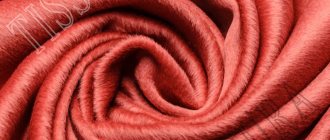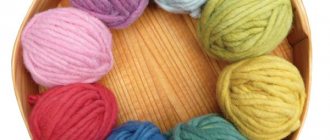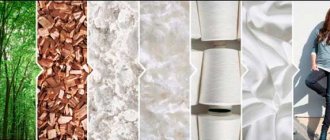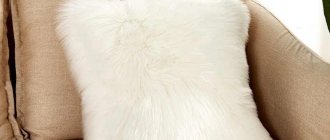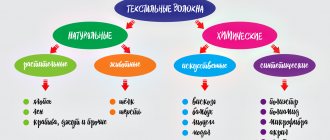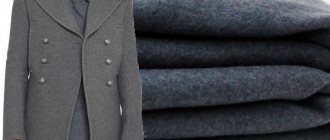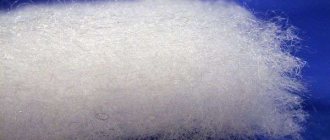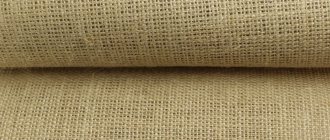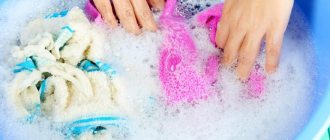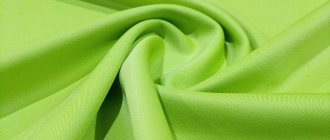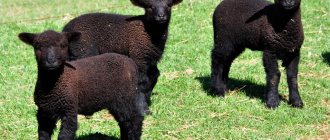How did Angora appear?
Angora wool has always been considered the queen of fabrics because it provides warmth, beauty, and comfort. Many people are interested in the question: whose wool is Angora? Usually they mean Turkish wool from sheep, but other animals also provide wool. One of them is the Angora goat, “dressed in a luxurious woolen coat” all year round.
Angora wool
For many years, goats lived in Turkey, the province of Angora (Ankara). Already at the beginning of the 19th century. Europeans appreciated and began to wear things made of angora. Realizing what kind of “gold” this was, the Sultan strictly forbade the export of animals from Turkey. The cost of wool was so high that the Chinese came up with the idea of producing cheaper material from the fluff of wild rabbits called Angora.
Angora is mohair, which translates as “chosen”. Indeed, Angora wool is a very beautiful, durable and at the same time light fabric that feels similar to the touch. Designers call it “comfortable elegance.”
Goat in Turkey
Mohair is a natural fiber. To obtain it, goats that are not yet six months old, or older ones up to 2 years old, are sheared to zero. Then you get the highest quality, soft, silky material. If the wool is taken from an adult animal, it is used only for outer clothing.
For your information! Today, the ban on the export of mohair has been lifted, and angora is sold all over the world.
Composition of angora knitwear
Natural Angora is a material based on the wool of Angora goats. They are bred in Turkey. The length of the coat can reach up to 30 cm. At the same time, it is soft and has a silky shine. Natural shades can be gray, white and black.
Natural angora fabric
Angora is used to produce the most expensive products from woolen fabrics. A little later, goat hair began to be replaced with the fluff of long-haired Angora rabbits. This material is considered more budget-friendly and is not very durable. Currently, material and knitwear based on fiber obtained from goats are produced by such popular manufacturers as Italy, Japan and France.
Most of what is sold as angora is derived from rabbit down and various additives. Such matter will not be distinguished by high strength and durability. Most often on the modern market you can find fabric that includes 10-20% down, 50% acrylic and 40% polyester. Sometimes unscrupulous manufacturers use traditional wool from fine-wool sheep instead of down.
Angora is the fur of which animal?
To truly understand what angora is, you need to understand how it is mined today. Angora down is soft and warm. However, it must be taken into account that the fluff is not securely fixed in the yarn, since silk fibers are smooth and soft. Therefore, angora is usually combined with plain or merino wool, as well as synthetics and acrylic.
You might be interested in this Real reviews about the quality of satin in bed linen
Angora yarn is light. Combing or plucking is carried out twice a year, and animals are cut and shaved approximately once every 10-13 weeks. Downy hairs are shorter than wool fibers, but very warm and light. The hair of animals is very clean, since the skin secretes a small amount of sebaceous glands.
Angora rabbit
On an industrial scale, only white albino rabbits are mainly bred. The best Angora is produced in:
- Italy;
- France;
- Japan.
For your information! Colored Angora rabbits are bred only in India.
Today, Angora sheep wool mainly refers to mohair. The best angora is used in the production of knitwear, both separately and in combination with other varieties of wool to increase the reliability of the fibers.
The skins of Levantine and Persian Angora goats are used for blankets, carpets, etc., which are also called Angora. Angora is also used for sewing pekhor coats.
Characteristics
It is no secret that the properties of a fabric are largely determined by its composition. Due to the fact that angora is made from different fibers and raw materials, its characteristics may vary. We will give only general features:
- soft;
- light;
- warm;
- pleasant to the body;
- does not prick;
- allows air to pass through;
- absorbs moisture;
- has a shiny, silky surface;
- elastic, does not hinder movements.
The fabric is not without its shortcomings. Negative qualities:
- may roll off;
- not wear-resistant;
- subject to abrasion;
- easily deformed when wet;
- may be damaged by moths;
- demanding care.
To a greater extent, these shortcomings are characteristic of fabrics with long pile and a high content of natural wool. Fully synthetic varieties are more wear-resistant, but they retain heat somewhat worse and allow air to pass through, and can become electrified.
Description of Angora fabric
The main qualities characteristic of angora are softness and warmth. Most of the material produced on an industrial scale is white and can be easily dyed if necessary.
Clothing options
Angora or mohair are in great demand today, used for knitting, thanks to which properties such as warmth and individuality are combined in one product. The strengths of the fabric are diminished by the fact that rabbit fluff is short-lived. Over the years, hairs come out of the base, so both fabric and angora knitwear are characterized as mixed materials. The fibers with which angora is mixed are as follows:
- wool, merino for expensive fabrics;
- acrylic for knitwear and yarn;
- viscose and polyester for economy items.
Important! Before buying an angora product, it is important to study the composition of the fabric. This affects the price and characteristics.
Wool may contain synthetics, making the fabric stronger. However, after long and frequent wear, the hairs of the fabric lose their thermal insulation properties. This is due to the reduction in the amount of fluff.
Classification of Angora wool varieties
The bulk of what is sold as angora is cashmere, obtained from rabbit down with the addition of additional fibers. This fabric is not strong or durable. Usually on the domestic market you can find fabric that consists of:
- fluff - 10-20%;
- acrylic thread - 50%;
- polyester - 40%.
You may be interested in: Appearance of flax: use of fibers
Cashmere fabric
Sometimes dishonest manufacturers take standard yarn from ordinary sheep instead of down.
Today, angora is most often found in two popular varieties - melange and supreme. In the first case, a material is used that is formed in the process of using yarn into one thread from threads of different colors. The tone of each element of the material is sometimes very contrasting or may differ by several shades. Thanks to the combination of threads of different shades, a patterned version is obtained that resembles the surface of polished marble. The more contrast the threads are, the brighter the knitting will be. This cotton material is elastic and stretches well.
Types of fabric: melange and suprem
Today, angora is represented by two most popular types - melange and supreme..
The first type of fabric is characterized by a woven fabric, which is formed as a result of the use of natural or synthetic single-strand yarn from threads of different colors. The color of individual parts of the raw material may be contrasting or differ by a couple of shades. The more contrasting the shades of the fibers, the brighter the finished fabric will be.
Angora melange. By combining threads of different colors, a material with a pattern is formed that resembles the surface of polished slabs of marble chips.
But suprem is a drawstring stitch that contains lycra. It is a thin elastic cotton fabric that stretches
Features of fabric care
Real Angora requires careful care.
Storing clothes in a case
The recommendations are as follows:
- You cannot wash, even by hand, only dry cleaning;
- iron is prohibited, can be ironed over steam;
- store in cases;
- you need to use anti-moth medications.
Cheap items with a small amount of angora are easy to care for. Can be washed in water at 30°C with baby shampoo.
History and description
What is Angora? This is a wool fabric based on the fluff of the Angora goat or Angora rabbit. It is worth noting that the first option is also produced under the name “Mohair”, and is used when sewing products from the world’s most famous brands. The price of a meter of goat down fabric can reach 4,500 per meter.
Products made from the fluff of Angora goats have always been very highly valued, so much so that until the mid-19th century, the export of these animals outside the territory of the country that is their homeland, Turkey, was prohibited. For the opportunity to dress up in clothes made from this fabric, we should be grateful to the American James Davis, who helped Turkey in growing cotton. It was for this that the US citizen was gifted by Sultan Abdul Majid with two such goats.
The natural color of the fabric is white, gray or black. The material lends itself perfectly to coloring, which means that threads and angora fabric delight with the color palette.
The angora wool that we see on the shelves now rarely contains Angora goat fluff - it is often replaced with Angora rabbit fluff, and in some cases (be careful!) and fine fleece sheep wool. Rabbit down is less durable, so the percentage of additional materials here is greater than in classic mohair.
The photo shows angora fabric.
Positive and negative sides
Angora has many advantages, but there are also disadvantages.
Fibers close up
Positive sides:
- fluffy, tender, comfortable;
- shiny and silky, looks beautiful;
- relatively light, almost airy;
- maintains body temperature not only in cold weather, but also in hot weather;
- hypoallergenic;
- easy to paint.
Negative sides:
- fragility, poor wear resistance;
- rubbed;
- afraid of water.
Angora jacket
The right kits
Combining not only sewn, but also knitted mohair coats is very careful. A win-win option in this case is to combine it with other wardrobe items with a smooth texture and even, semi-fitting lines. For example, a tweed two-piece trouser suit, complemented by a translucent chiffon blouse, would be ideal for such a coat.
But the main rule of stylists is that a mohair coat should be styled in a classic style or in others with the prefix “chic”. So, for an evening date, a set based on a coat, complemented by 7/8-length trousers, a wool-blend sweater and classic high-heeled pumps, would look great. To complete your look in style, just put on a fedora hat and pick up a clutch or envelope bag.
For everyday looks, stylists recommend making sets with dresses and skirts. For example, combine a chemise dress with a coat, made of thick fabric, and complemented with ankle boots or high-top boots. It is worth remembering that when it comes to looks with a mohair coat, fashion observers strongly recommend wearing shoes with high heels or wedges, which in this case compensate for the extra visual volume given by this piece of outerwear.
Reviews
The opinions of people who rated this wool are mostly positive:
Irina Valerina, 39 years old, Kazan: “I’ve been wearing things from angora for many years. The wool is not itchy, warm, and does not stretch. The secret to longevity is proper care.”
Marina Pugovkina, 51 years old, Stavropol: “I have loved mohair things since Soviet times. Nowadays it’s difficult to find high-quality wool, so I knit it myself. Angora is also good for the joints and lower back.”
Thus, angora is a real and high-quality material that has many positive qualities. Things are made from it for both adults and children. But there is one significant drawback - special care.
Application: products
Angora is used in the manufacture of children's wardrobes, sweaters, suits, dresses, coats and scarves. When combined with other types of yarn, angora can be used to produce curtains, pillows, and upholstery. Angora socks remain very popular, they help out in winter frosts. Products made from angora bring a pleasant feeling, create comfort and coziness. Cashmere coat fabric is often used for the production of outerwear. Also read about other types of woolen fabrics in this material.
You can buy angora in any specialized store at a price of 160-220 per m.
On video of dresses made of angora material:
